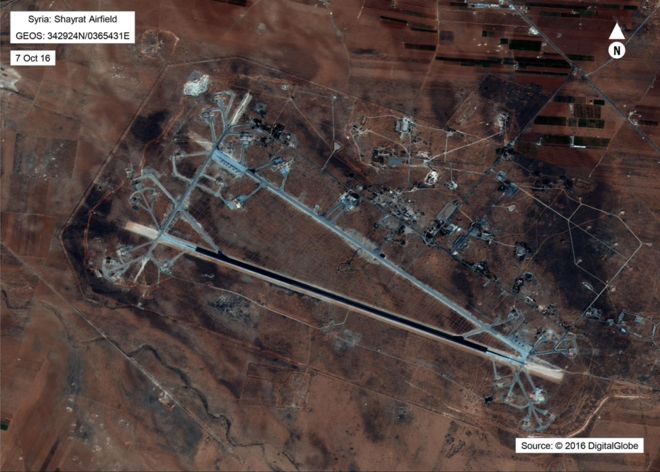
Shayrat airbase was the target of the US' first deliberate direct attack on Syrian forces since the start of the war six years ago. So why was it chosen?
Some 59 cruise missiles were fired at the Syrian Air Force facility in response to what President Donald Trump said was a chemical weapons attack on a rebel-held town three days before.Pentagon spokesman Capt Jeff Davis said Shayrat airbase was used to store chemical weapons, and that US intelligence assessed that aircraft from there had dropped bombs filled with a nerve agent on Khan Sheikhoun, killing more than 80 people.
Syrian President Bashar al-Assad has denied ever having used chemical weapons.
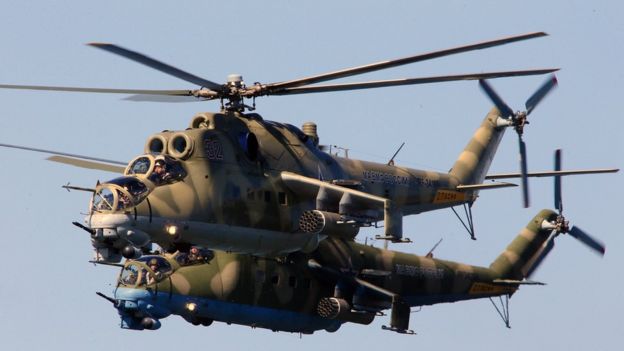 Image copyright Getty Images News
Image copyright Getty Images News The airbase has been occupied by the Syrian military throughout the country's six-year civil war, and Syrian Air Force Su-22 and MiG-23 warplanes fly from there.
The airbase was used to store chemical weapons until 2013, when Mr Assad agreed to the destruction of the country's declared chemical arsenal after his forces were accused of firing rockets filled with the nerve agent Sarin at rebel-held suburbs of Damascus, killing hundreds of people.
In early November 2015, just over a month after launching an air campaign against Mr Assad's opponents, the Russian military reportedly began using Shayrat as a forward operating base for Mi-24 and Mi-35 attack helicopters.
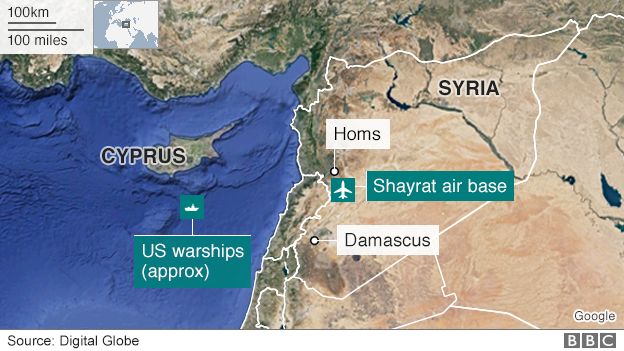
The move was denied by the Russian defence ministry, but further satellite images taken at the end of March 2016 showed several Ka-52 Alligator and Mi-28N Night Hunter attack helicopters had also arrived, according to IHS Jane's.
Fighters from Lebanon's Hezbollah movement and Iranian-backed Iraqi militias supporting the Syrian army on the ground are also believed to have used Shayrat.

Media playback is unsupported on your device
Rescue workers said many children were among those killed or injured in the attack
US military officials told NBC News that the radar systems picked up flashes on the ground, indicating that ordnance had been dropped on the rebel-held town.
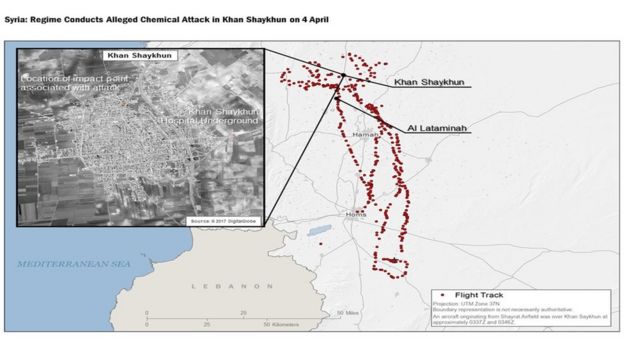 Image copyright Pentagon
Image copyright Pentagon Russia said the Syrian jets had hit a rebel depot full of chemical munitions, but Mr Trump said "there can be no dispute that Syria used banned chemical weapons".

Media playback is unsupported on your device
Trump: "Assad choked out the lives of helpless men, women and children"
The Syrian pro-opposition website, Orient News, meanwhile said the jet's pilot had been identified as the commander of an Su-22 squadron at Shayrat.
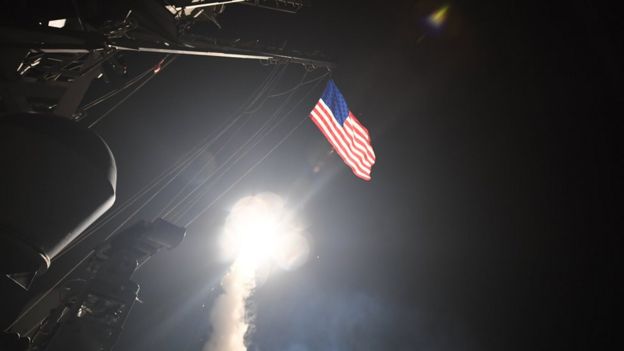 Image copyright Getty Images
Image copyright Getty Images Capt Davis said they targeted "aircraft, hardened aircraft shelters, petroleum and logistical storage, ammunition supply bunkers, air defence systems, and radars", describing them as "things that made the airfield operate".
"We are assessing the results of the strike," he added. "Initial indications are that this strike has severely damaged or destroyed Syrian aircraft and support infrastructure and equipment at Shayrat airfield, reducing the Syrian government's ability to deliver chemical weapons."

Russian forces were notified in advance of the strike using a "de-confliction line" set up to ensure US warplanes attacking IS positions in Syria are not accidentally attacked by Russian jets, he added.
Mr Trump's National Security Adviser, H R McMaster, said measures had also been put in place to avoid hitting what were believed to be stores of Sarin at Shayrat, so that it "would not be ignited and cause a hazard to civilians or anyone else".

Media playback is unsupported on your device
Mobile footage of missile strike in Syria
A Syrian living a few kilometres from the airbase told the BBC that he was awoken at about 03:45 by the force of the explosions. When he looked outside, he saw larges areas on fire, he said.
A cousin doing military service said he had gone to check on his friends at the facility and seen "total devastation", he added.
The Syrian military said the strike had left six personnel and a number of others injured, and caused "huge material damage".
The official Sana news agency reported that nine civilians living in villages near the airbase, including four children, had also been killed in the strike.
 Image copyright AFP
Image copyright AFP The spokesman also described the effectiveness of the US strike as "extremely low", saying only 23 missiles had reached Shayrat.
"It is obvious to any specialist that the decision to carry out an air strike on Syria had been taken in Washington long before the events in Khan Sheikhoun, which only served as a formal pretext," he said, explaining that a "wide range of reconnaissance and planning measures" would have been necessary.
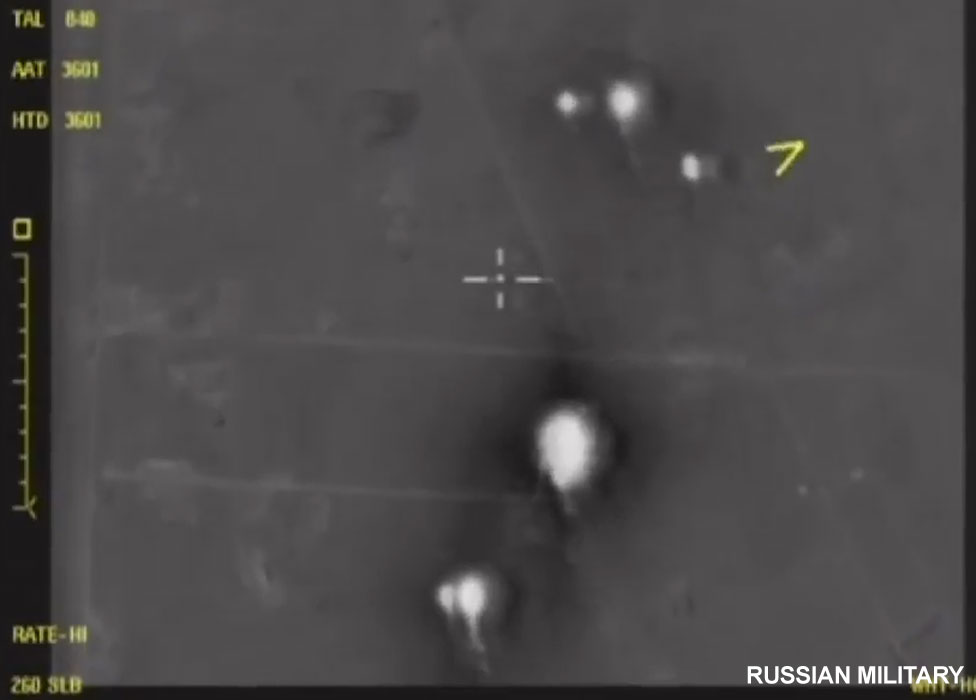
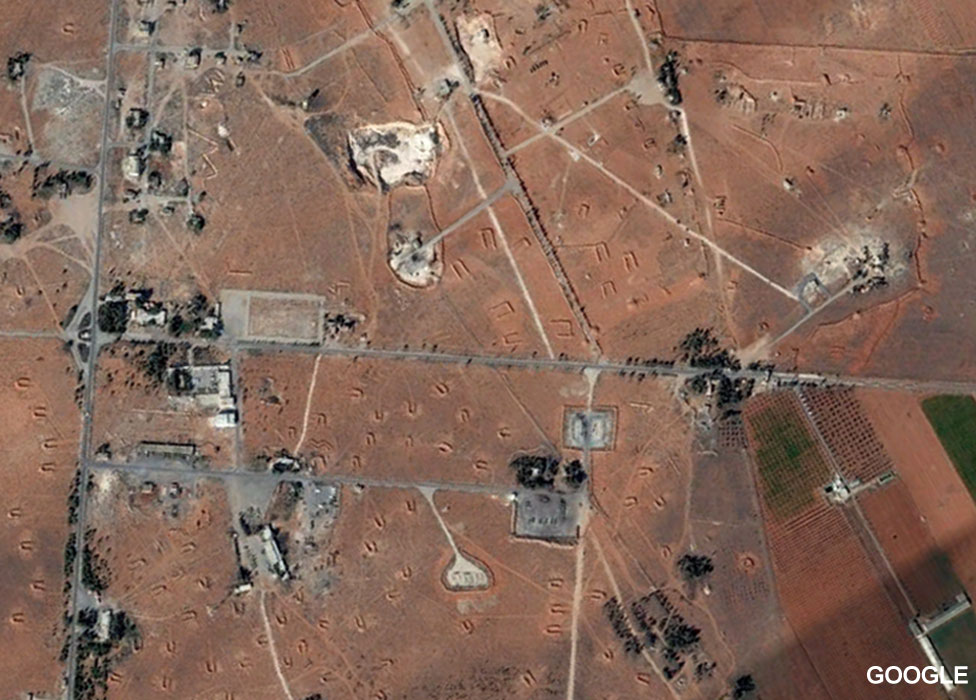
No comments:
Write comments